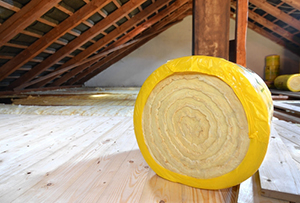Summer's just around the corner, which means it's just about time to turn on the air conditioner. With today’s high energy costs, homeowners are always looking for ways to reduce monthly energy bills. An attic exhaust fan can help, as it's designed to reduce the temperature in your attic by pushing hot air out.

An attic exhaust fan is more efficient than natural airflow through passive vents on your home. The attic exhaust fan works by drawing up cooler air from the soffit or gable attic vents to replace the hotter air that's being discharged by the fan. This can reduce the air temperature in the attic by 10 degrees or more.
However, many Massachusetts homeowners have insulation installed to keep heated air from escaping into the attic. According to the U.S. Environmental Agency's Energy Star program, errors made during insulation installation can have a detrimental effect. When the insulation was installed, the soffit or gable vents may have been blocked by the insulation, which can cause the exhaust fan to pull conditioned air from inside the home. This has a domino effect, as your air conditioning works even harder to keep the air in your home cool. This also leads to more money spent on energy costs.
To alleviate this blockage, ensure that your home's soffit or gable vents aren't obstructed. This can be done by the installation of rafter vents, which keep the insulation from blocking the soffit vents and allows for channeled and unrestricted airflow into the attic. Once these rafter vents are installed along your attic eaves, insulation can be properly placed around them without blocking your home's ventilation.
For more information about attic ventilation and insulation, please contact us at Rodenhiser Plumbing, Heating & Air Conditioning. We've been serving the Route 495/128 area of Massachusetts for four generations.
Image via Shutterstock.com